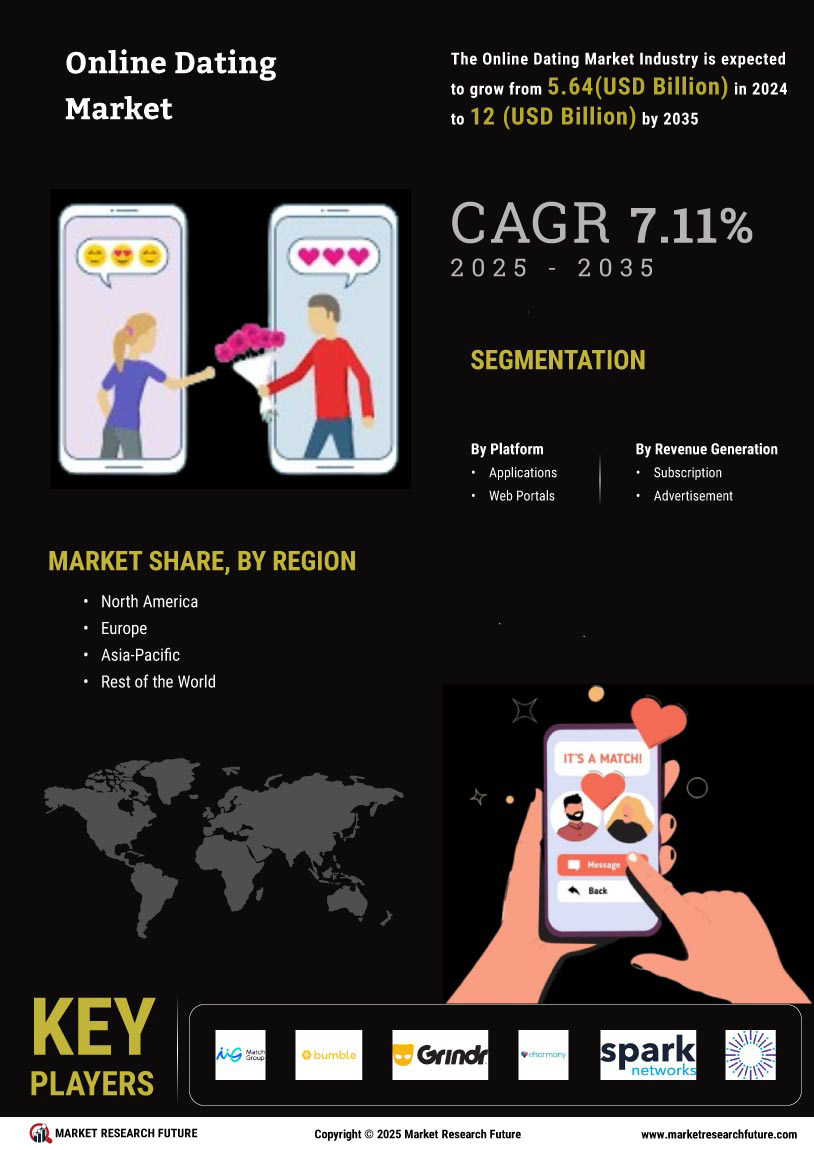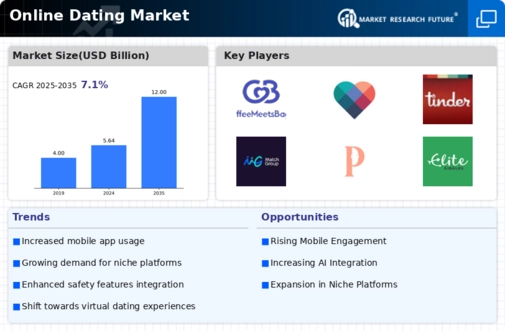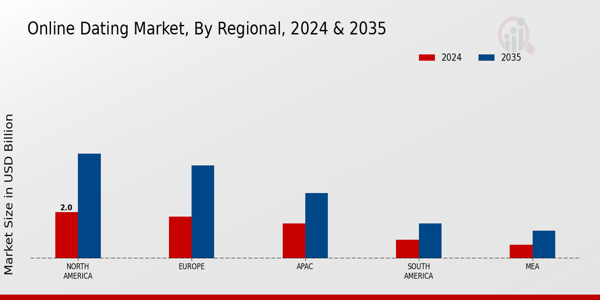Evolving Social Norms
Shifting societal attitudes towards relationships and dating seem to play a crucial role in the expansion of the Global Online Dating Market Industry. As traditional dating methods evolve, individuals are increasingly open to meeting potential partners through digital platforms. This cultural transformation is particularly evident among younger generations, who view online dating as a normative practice. The industry's projected growth to 12 USD Billion by 2035 suggests that these changing social norms will continue to foster acceptance and utilization of online dating services. As more people embrace these platforms, the market is likely to expand further, reflecting broader societal changes.
Diverse User Demographics
The Global Online Dating Market Industry is characterized by a diverse user base, which appears to be a significant driver of its growth. Various platforms cater to specific demographics, including age, interests, and sexual orientation, thereby attracting a wide range of users. This segmentation allows for tailored experiences, enhancing user satisfaction and retention. As the market evolves, it is likely that new niches will emerge, further diversifying the user landscape. The anticipated compound annual growth rate of 7.1% from 2025 to 2035 suggests that as more individuals seek personalized dating experiences, the industry will continue to thrive.
Market Growth Projections
The Global Online Dating Market Industry is poised for substantial growth, with projections indicating a market value of 5.64 USD Billion in 2024 and an anticipated increase to 12 USD Billion by 2035. This growth trajectory suggests a compound annual growth rate of 7.1% from 2025 to 2035. Such figures reflect the increasing acceptance of online dating as a viable means of forming relationships, alongside the continuous evolution of technology and user preferences. The market's expansion is likely to be driven by a combination of factors, including demographic shifts, technological advancements, and changing social norms, all contributing to a dynamic and evolving industry.
Technological Advancements
Technological innovations, particularly in artificial intelligence and machine learning, seem to be reshaping the Global Online Dating Market Industry. These advancements enhance matchmaking algorithms, improving user experience by providing more accurate matches based on preferences and behaviors. As these technologies evolve, they may lead to increased user satisfaction and engagement, potentially driving market growth. The integration of features such as video dating and virtual reality could further revolutionize the industry, making online dating more interactive and immersive. This ongoing technological evolution suggests that the market will likely continue to expand as users seek innovative and engaging ways to connect.
Safety and Security Enhancements
Concerns regarding safety and privacy in online dating appear to be a significant driver influencing the Global Online Dating Market Industry. As users become more aware of potential risks, dating platforms are increasingly implementing robust security measures, such as identity verification and data encryption. These enhancements not only build user trust but also encourage more individuals to engage with online dating services. As the industry matures, it is likely that platforms will continue to prioritize user safety, which could lead to increased market participation. This focus on security may ultimately contribute to the projected growth of the industry in the coming years.
Increasing Smartphone Penetration
The proliferation of smartphones globally appears to be a pivotal driver for the Global Online Dating Market Industry. With an estimated 5.64 USD Billion market value in 2024, the accessibility of dating apps on mobile devices enhances user engagement and convenience. As smartphone penetration continues to rise, particularly in developing regions, more individuals are likely to explore online dating platforms. This trend indicates a growing acceptance of digital interactions, which may lead to a broader demographic engaging with these services. Consequently, the industry could witness accelerated growth as mobile technology becomes increasingly integrated into daily life.















